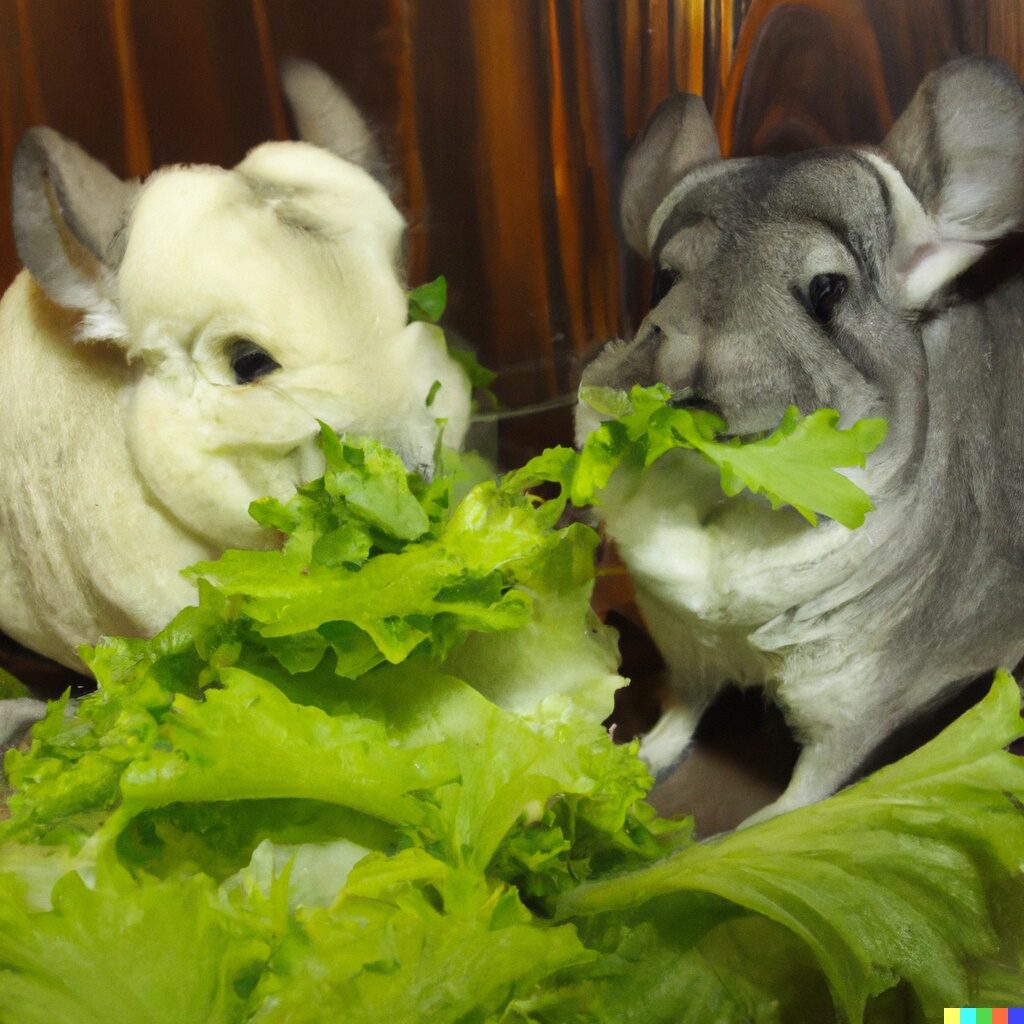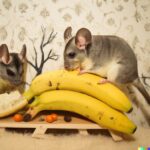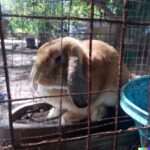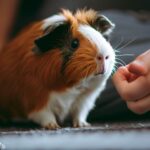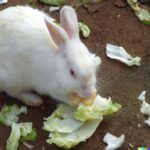Chinchillas can eat lettuce, but it is not recommended. Lettuce can cause digestive problems in chinchillas and can even cause bloat. Lettuce also contains a lot of water and not a lot of nutritional value, so it is not an ideal food for chinchillas. A small piece of lettuce can be offered as a treat occasionally, but it should not make up a large part of the chinchilla‘s diet. Other vegetables such as kale, collard greens, and carrots are better choices for chinchillas.
If you’re a proud chinchilla owner, you may have asked yourself this question: “Can chinchillas eat lettuce?” It can be difficult to find the answer among all of the conflicting advice out there. But don’t worry – we’ve done the research and have some surprising insight into whether or not your furry friend can enjoy a bit of leafy greens. Read on for all the information you need to make sure your beloved pet is safe and healthy!
Nutritional Benefits of Lettuce for Chinchillas
Chinchillas are small rodents that can make a wonderful pet. In order to keep them healthy, it is important for their owners to know what types of food they should be eating and which foods to avoid. Lettuce is one type of food that can offer several nutritional benefits for chinchillas when consumed in moderation.
Vitamin C
Lettuce contains vitamin C, which helps support the development of bones and teeth as well as improve your chinchilla’s immune system. Vitamin C also plays an important role in helping the body absorb iron from other foods, so adding lettuce into your chinchilla’s diet can help ensure that their body gets enough essential nutrients.
Fiber
Another benefit of feeding your chinchilla lettuce is its high fiber content. Fiber helps promote digestion and keeps things moving through the digestive tract, preventing constipation or other gastrointestinal issues common with these animals if they don’t get enough fiber in their diets. It also helps add bulk to stool, making it easier for them to pass waste more regularly and efficiently while reducing strain on their bodies during the process.
Nutrients
Finally, lettuce provides many essential nutrients such as calcium and magnesium which help strengthen bones and muscles while providing energy throughout the day The vitamins A & K found in lettuce are great for vision health too! Additionally, dark green leafy lettuces contain large amounts of chlorophyll- a natural detoxifier that cleanses toxins from the blood stream leaving your furry friend feeling energized!
- Calcium
- Magnesium
- Vitamins A & K
. All these components together will give you pet better overall health by boosting immunity levels; aiding digestion; increasing energy levels; promoting healthier skin & fur growth etc.,
Types of Lettuce Safe for Chinchillas
Chinchillas are small and cuddly animals that require a special diet. They cannot eat just any type of lettuce, as some varieties can be toxic to them. It is important to know the types of lettuce that are safe for chinchillas before giving it to your pet.
The most common type of lettuce safe for chinchillas is Romaine or Cos lettuce. This variety has a mild flavor and crunchy texture, making it an ideal treat for your furry companion. The leaves should be washed thoroughly before feeding them to your chinchilla, as they may contain bacteria or other contaminants from their growing environment. Additionally, you will want to avoid giving too much Romaine or Cos lettuce at one time as this could cause digestive upset in some cases.
Another variety of lettuce suitable for feeding chinchillas is Iceberg Lettuce. Although this type has very little nutritional value compared to romaine and cos lettuces due its low water content, it still makes a great occasional treat if given in moderation. When selecting iceberg lettuce look out for signs of spoilage such as brown spots on the leaves since these can make your pet sick if consumed.
Finally, Endive Lettuce is considered another safe option when providing greens for your chinchilla’s diet plan .This leafy green has slightly bitter taste but contains plenty of beneficial vitamins and minerals which helps keep their coat healthy looking shiny and soft! Just like with other types of lettuces you should wash endive carefully prior serving so that no dirt remains on the surface which could potentially harm your pet’s health
In conclusion, there are several types of lettuces that are deemed safe options when introducing vegetables into a chinchilla’s diet plan including: Romaine/Cos Lettuce; Iceberg Lettuce; Endive Lettuce.
- Romaine/Cos: Mild flavor & crunchy texture
- Iceberg: Low nutritional value – watch out for spoilage
- Endive: Slightly bitter taste but high in vitamins + minerals.
How to Prepare and Serve Lettuce for Your Chinchilla
Lettuce is a great way to make sure your chinchilla gets the vitamins and minerals it needs for optimal health. In addition, it’s an excellent source of fiber that can help keep your pet’s digestive system running smoothly. But how do you prepare and serve lettuce so that your furry friend can enjoy all of its benefits? Here are some tips on what to look for in lettuce, as well as how to serve this leafy green vegetable safely.
When shopping for lettuce for your chinchilla, be sure to check the label carefully. Look for organic varieties whenever possible, since they tend to have fewer pesticides than conventionally grown produce. Also pay attention to any additional ingredients or additives that could be dangerous if ingested by small animals like chinchillas. Finally, inspect the leaves closely; they should be bright green and free from wilting or discoloration.
Once you’ve brought home the right kind of lettuce, it’s time to give it a thorough cleaning before serving it up! Start by rinsing off each leaf with cool water — avoid using hot water or detergents — then pat them dry with a paper towel or cloth napkin. Next, cut off any yellowed edges or spoiled sections and discard them; these will not provide nutrients nor safe digestion options for your pet rodent . Lastly, chop up the remaining healthy parts into smaller pieces so that they’re easier for your chinchilla to handle when eating them out of their bowl (or directly from their paws!).
Now you’re ready to offer up some tasty treats! Lettuce can be served fresh in a bowl alongside other vegetables like carrots and celery; alternatively mix chopped pieces in with regular feedings such as hay cubes or pellets . If you want something special every once in awhile , try freezing small chunks ahead of time – just remember thaw them completely before offering them up ! No matter which method you choose , always ensure there’s plenty of clean drinking water available at all times – let hydration take precedence over nutrition.
Potential Risks Associated with Eating Lettuce
Bacterial Contamination
Eating lettuce can present a risk of bacterial contamination, as the raw leaves may be exposed to various types of bacteria prior to harvest. This could occur through contact with soil, water or other sources. The most common type of bacterial contamination is Salmonella, which can cause food poisoning and result in symptoms such as nausea, vomiting, fever and diarrhea. In some cases more serious health complications may develop if left untreated. To reduce the risk of bacterial contamination it’s important to wash lettuce thoroughly before consuming it and ensure that any products containing pre-washed lettuce have been stored properly in order to maintain their freshness.
Pesticide Residues
Another potential risk associated with eating lettuce is pesticide residues that may remain on the leaves after they are harvested. Pesticides are used by farmers in an effort to protect crops from pests but unfortunately these chemicals can sometimes linger on produce even after harvesting has taken place. Consumption of pesticides over time can lead to various long-term health concerns including birth defects, cancer and reproductive issues so it’s important for consumers to select organic varieties whenever possible or consider growing their own lettuces at home.
Nutritional Deficiencies
While there are many nutritional benefits associated with eating lettuce such as vitamins A & C and dietary fiber, there is also a potential for nutrient deficiencies due to its low calorie content when compared with other foods like grains or legumes. If not balanced out by other nutritious options within a diet then this could potentially lead to nutritional deficiencies over time that might manifest themselves through fatigue or difficulty concentrating amongst other symptoms. Eating diversely will help ensure adequate intake of vital nutrients required for optimal functioning so try incorporating different plants into your meals each day!
Signs of Unhealthy Consumption of Lettuce in Chinchillas
Chinchillas are small rodents native to South America, and they have become popular as domesticated pets due to their playful nature, docile temperament and low-maintenance diet. As part of a healthy chinchilla lifestyle, it is important for owners to provide them with the right foods – including fresh lettuce on occasion. However, overconsumption of lettuce can be very harmful to these animals; therefore it is essential that pet owners familiarize themselves with the signs of unhealthy consumption in order to keep their chinchillas safe and happy.
Weight Loss
One common sign of unhealthy consumption of lettuce in chinchillas is sudden or rapid weight loss. This is usually caused by an inability to absorb nutrients from the plant material because too much has been consumed at once. If you notice your chinchilla not eating its regular meals or exhibiting any signs of weight loss such as loose fur or sunken eyes, then it may be time for you start monitoring their food intake more closely and reduce how much lettuce they are being given per day accordingly.
Diarrhea
Another potential symptom associated with excessive consumption of lettuce in chinchillas is diarrhea. When large amounts of this food item are ingested all at once rather than spread out throughout the day, it can cause digestive problems which manifest as soft stools (or even liquid stool). This type of reaction will usually pass within several days but if left untreated could lead to dehydration and other serious health issues.
Lethargy/Low Energy Levels
Lastly, overindulging on lettuce can also cause lethargy or a decrease in energy levels overall due to lack nutrition absorption into the body; thus leading your pet feeling sluggish and uninterested in doing activities like running around its cage or playing with toys. If this occurs it’s best not only cut back on how much leafy greens they consume each day but also supplementing their diet with proteins found in other foods such as sunflower seeds so that they don’t become malnourished during recovery period.<
Alternatives to Feeding Your Chinchilla Lettuce
Fruit
Chinchillas can safely enjoy a variety of fresh fruits as an occasional treat. These should be given in small amounts to prevent digestive upset or excess sugar intake. Some great options for chinchillas include apples, pears, bananas, grapes and berries. All fruit should be washed thoroughly and served without any seeds or stems present. Additionally, it’s best to avoid citrus fruits like oranges and lemons due to their acidity level that could cause stomach issues if ingested by your pet chinchilla.
Vegetables
In addition to the occasional piece of fruit, vegetables are another healthy alternative you can offer your pet chinchilla as part of a balanced diet. Vegetables provide essential vitamins and minerals which help keep your pet healthy and strong! Great vegetable choices for your chinchilla include: kale, spinach, carrots (chopped into smaller pieces), celery stalks (without leaves) and broccoli florets. As with all treats offered to your pet chinchilla make sure they are washed well before feeding them to ensure no dirt is passed along with the food item itself.
Herbs & Grasses
Finally herbs & grasses are also a great way you can add variety into what you feed your pet Chinchilla! You can find specially formulated mixtures from most large retail stores or online specifically made for Chins so that you know exactly what’s going into their diet each day – talk about convenience! Herbs such as basil & oregano can be enjoyed by pets in small doses while grasses like timothy hay have long been known to provide ample fiber & other vital nutrients necessary for good digestion health among many animals including our beloved Chins!
Summary
:
The Benefits of a Healthy Diet
Maintaining a healthy diet is essential for living a long and fulfilling life. Eating the right foods can have tremendous benefits on your physical, mental, and emotional health. Not only will it help you stay fit and lean, but also provide long-term protection from chronic illnesses like heart disease and diabetes.
A healthy diet provides your body with all the nutrients it needs to function properly. This includes vitamins, minerals, carbohydrates, proteins, fats and other essential components that make up our food supply. Eating nutritious meals helps ensure that you get adequate amounts of these important substances in order to remain strong and alert throughout the day. The energy provided by these nutrients will also help keep fatigue at bay so that you can perform better in both work or school settings.
In addition to providing physical benefits such as increased energy levels, eating well has positive impacts on mental health as well. Studies have shown that individuals who eat balanced diets are less likely to suffer from depression than those who do not receive proper nutrition through their diets alone. A healthy diet may even improve cognitive functioning due to its ability to nourish brain cells themselves! Stress levels can be reduced when eating nutritious meals since they provide more fuel for our bodies which allows them to operate at maximum capacity without feeling overwhelmed or overworked by everyday tasks or responsibilities.
Furthermore – following a healthier lifestyle doesn’t just benefit adults; kids need good nutrition too! Children who consume wholesome foods are better equipped with vital vitamins & minerals needed for development & growth; this keeps them energized throughout the day while giving them extra focus in class allowing them learn more efficiently compared to those who don’t follow a balanced nutritional plan.
Finally – having an overall balanced diet isn’t only about looking great physically but being able maintain optimal performance mentally as well! Eating nutrient rich foods has been linked with improved memory recall while helping reduce stress levels during times of high pressure situations such as exams or job interviews – making sure your mind remains sharp & focused no matter what challenges come your way!
